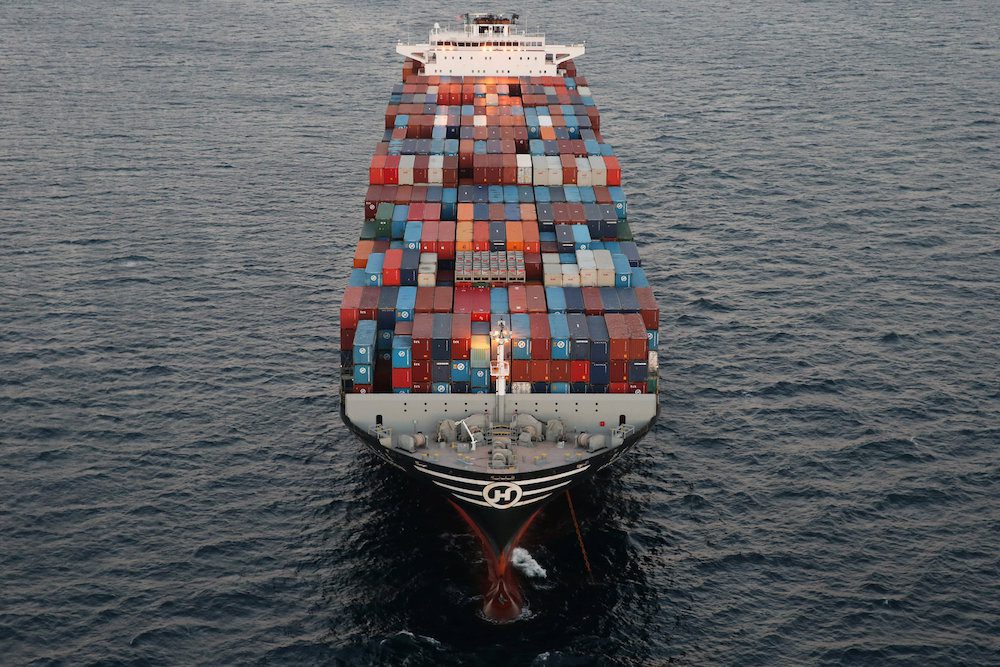A Hanjin Shipping Co ship is seen stranded outside the Port of Long Beach, California, September 8, 2016. REUTERS/Lucy Nicholson
By Alex Lennane
(The Loadstar) – Perhaps what is most striking about this timeline is that news of Hanjin’s financial troubles publicly surfaced in May. Yet in August, the carrier announced its second quarter financial results and revealed that volumes had risen 7.2% since the first quarter, and 1% year-on-year – showing that shippers continued to be lured by low rates, despite the risks.
As SeaIntel noted in its Hanjin research, which it shared this week: “If we are being objective about this, the shippers are not without their part in creating this situation.”
It added: “The relentless pressure on rates in recent years has created a situation where the entire carrier industry is heavily loss-making. And it is of course impossible to see a situation where you can have both a stable supply chain and at the same time ensure that the providers of said supply chain are not loss-making.
“Yes, the carriers have engaged in price wars, and it is the carriers that, at times unprovoked, offered even lower rates. But we are saying that an industry where one part obtains significant savings while the other part is loss-making is not a set-up which is viable long-term.”
Hanjin collapse in dates
Early May: Hanjin writes to owners of its chartered-in fleet and terminal operators asking for help. Negotiations start with charter companies.
May 23: Seaspan reveals that Hanjin is significantly behind on its charter hire payments to the tune of $11.6m and has asked for reductions in charter rates.
End of May: One bulk carrier owner loses patience with Hanjin and detains a ship for three days in the South African port of Richard’s Bay over unpaid charter fees.
Mid-June: Hanjin is thought to be owing even more in charter payments; by as much as Won100 bn (US$84.9m). Hanjin Group says it will invest US$21m and Hanjin Shipping starts to sell assets.
August 9: South Korea’s financial regulator rules out state aid for Hanjin.
August 16: Hanjin announces second-quarter results: a net loss of US$182m. Volumes increased 7.2%, despite speculation over its possible bankruptcy. The deadline for its voluntary restructuring agreement is extended by a month to early September.
August 20: Hanjin misses deadline to submit financial support measures to creditors.
August 25: Hanjin submits a financial improvement plan proposing an injection of US$360m via selling stock to affiliate Korean Air and raising another US$90m from other asset sales. Evidence that Hanjin has stopped paying charter companies. It now owes Seaspan US$18.6m.
August 26: Creditors reject the plan.
August 31: Hanjin files for court receivership, leading to largest ever bankruptcy in container shipping industry. Reports of vessel arrests in Singapore and Shanghai. Alliance partners announce contingency plans.
September 1: Hanjin captains ordered to slow-steam or stop to avoid risk of arrest. Ports and tug companies start to refuse Hanjin ships. Terminals ask shippers for stevedoring fees for cargo already in port. Hauliers demand cash-only payments. Freight rates start to “skyrocket” as shippers look for capacity outside CKYHE alliance.
September 5: South Korean government agrees with ports of Hamburg, Singapore, Los Angeles, Gwangyang and Busan that ships can unload. Eight do so. Hanjin applies for a “stay” order in 43 countries. Twenty non-Hanjin ships sent out to help.
September 6: Rotterdam court rules in favour of shippers challenging Rotterdam terminal operator ECT’s “unlawful” fees for releasing containers. Shipper associations appeal to other ports. Shippers including Samsung, which has $38m in goods on Hanjin vessels outside Los Angeles, appeal to US court to allow ships to dock. US court rules that Hanjin ships can dock, but cannot leave the port. Ships do not enter port and do not unload.
It is estimated that Hanjin would need to pay US$543m in fees to offload all its containers.
September 8: Shippers, suppliers, ports and intermodal companies file documents in US courts asking for supply chains to be allowed to move without financial risk to them.
The Loadstar is fast becoming known at the highest levels of logistics and supply chain management as one of the best sources of influential analysis and commentary.
Check them out at TheLoadstar.co.uk, or find them on Facebook and Twitter.

 Join The Club
Join The Club











